|
|

|
  
Feature
Update 2021/6/9
Coral reefs
MARINE SCIENTIST PROVIDES HOPE FOR CORAL REEFS FACING EXTINCTION
By Suzanne Forcese
“Take a deep breath. Now take another even deeper breath. For that first breath you can thank the rainforests. For the second breath, thank our coral reefs. And we all like to breathe.” --Dr David Vaughan, Founder of Plant a Million Corals
Forming the infrastructure of intricate reef ecosystems, coral reefs are often referred to as the rainforests of the sea.
Along with ocean plants, they generate half of the world’s oxygen and absorb nearly one-third of carbon emissions.
That’s not all. Coral reefs provide us with other services.
Covering less than 1% of the oceans’ floors the coral reefs are places for fish to breed, grow, and live, thereby supporting 25-50% of the fishing industry’s global catch. Eco-tourism visits to coral reefs and the surrounding environments generate $30 billion.
The coral reefs also protect our coastlines from wave and storm damage.
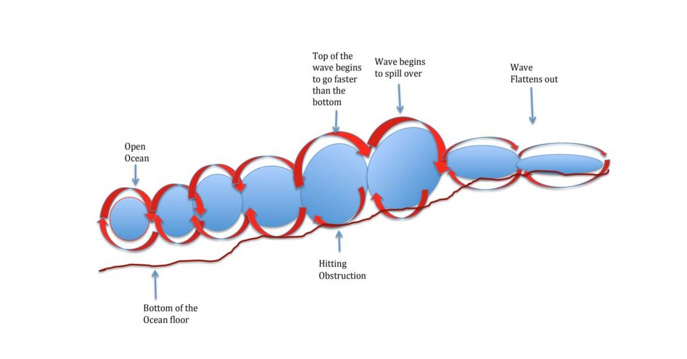
In the United States alone, coral reefs provide more than $1.8 Billion in flood protection benefits, affecting at least 18,000 people (Pacific Coastal and Marine Science Center U.S. Geological Survey).
As much as our planet depends on coral reefs for our ecological and economic survival, the startling reality is -- coral reefs are dying around the world.
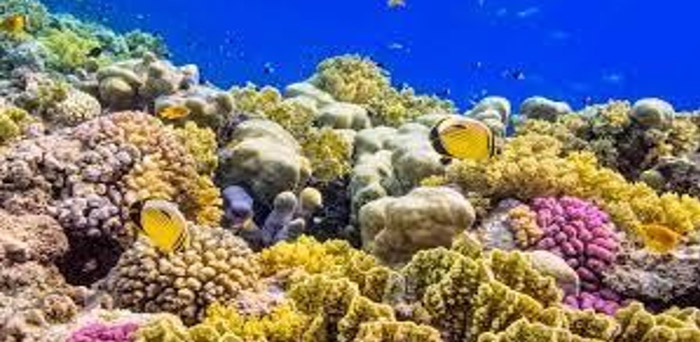
According to global assessments led by scientists and endorsed by governments such as the Intergovernmental Panel on Biodiversity and Ecosystem Services, critical ecosystems like coral reefs will be altered to the point that the biodiversity they hold, and the services they provide will be damaged beyond repair. Getty Image
Coral mining, agricultural and urban run-off, water pollution, rising water temperatures, increasing sea levels, and pH changes from ocean acidification associated with greenhouse gas emissions – these are the threats.
WATERTODAY had the pleasure of speaking with marine scientist Dr. David Vaughan, President and Founder of Plant a Million Corals, about the climate change induced problems. Also, about a solution -- his “eureka mistake”.
A mistake that gives us hope.
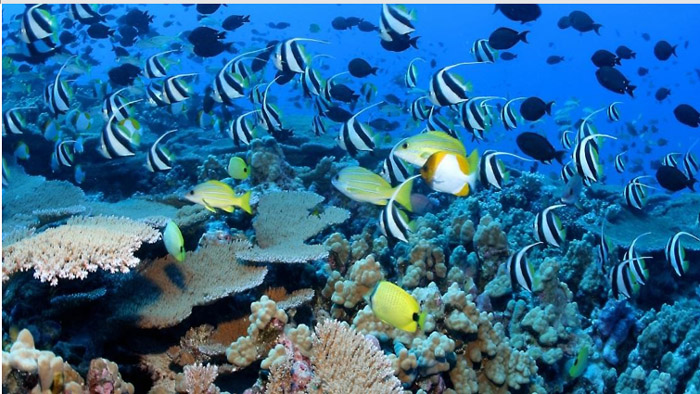
Coral reefs are the homes to various species of animals and fish. The structures that make up the reef are actually animals that must feed and grow, functioning via a symbiotic
relationship with zooxanthellae (a microscopic algae that provides corals with nutrients and oxygen). In return the algae receive nutrients and protections form the corals. NOAA
“Oceans are feeling climate change more drastically than land,” Dr. Vaughan tells us from his Florida base.
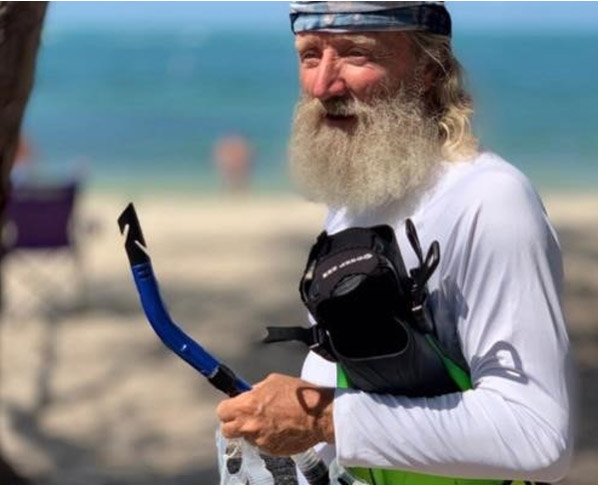
As previous Executive Director of the Mote Marine Laboratory in the Florida Keys, Dr. David
Vaughan initiated the coral restoration program heralded with developing the new technology of micro-fragmentation – a scalable tool for reef restoration as Founder of Plant a Million Corals
“Even half a degree change in sea water temperature can make a huge difference. Optimally a temperature range of 24° -28° C. is necessary for a healthy reef.”
Now however, the oceans are subjected to extreme temperature swings that are in a twenty-degree range of extremes.
“Reef organisms have never before experienced these swings.”
These climate change induced differences are creating coral bleaching.
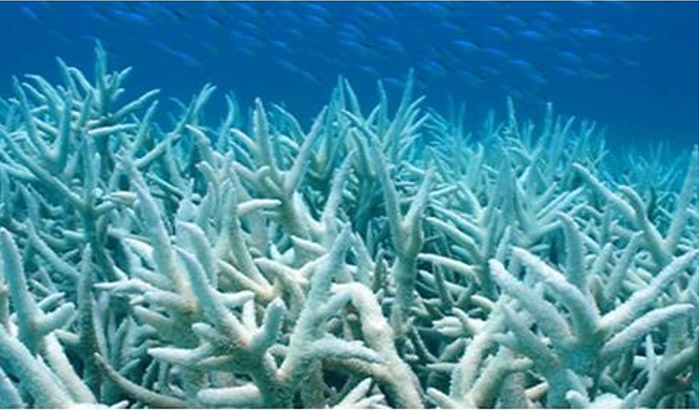
A coral reef’s color comes from the algae that live on the coral. If a reef has been stressed or diseased the algae will die and the coral will lose its color. Image NOAA
“Coral reefs are made up of plant, animal and a microbial colony – all taking advantage of sunlight. The microbiome is what gives immunity to the coral. Except when it is overheated. Under water the algae take in higher temperatures. The coral becomes more lethargic. It can’t diffuse the excess oxygen and tells the algae to get out.
“When the algae are gone the carbonate skeleton looks white. Essentially, the coral is starving to death.”
The problem is coral reefs cannot recover fast enough, particularly the massive species such as brain, star, boulder and mounding coral which can be centuries old. They will grow only a couple centimeters a year.
“Historically, coral bleaching used to happen once every century.
“Now it’s two to three times a decade as the coral succumbs to disease.”
If that is not enough cause for concern, Dr. Vaughan also refers to the “second evil twin”.
“The chemistry of our water has changed, making it harder for the calcium carbonate structure of the coral. Ocean acidification is like us holding our breath for too long. We either faint or are forced to breathe because of the carbon dioxide build up in our blood stream. Right now, the coral is holding the ocean’s breath.” Vaughan says in his lifetime of 67 years, 50% of the world’s reefs have died.
“But I don’t want to make this sound like Doomsday,” Vaughan continues. “If there is a ray of hope that we can keep the coral alive – maybe this will be the organism to change people’s minds about our water and climate change.”
Dr. Vaughan has created a technology, analogous to plant tissue culture that allows him to accomplish the same thing with coral.
It is what he calls his "eureka mistake” (youtu.be)
Branching Corals, such as staghorn, have always been known as fragile branches that can break, or fragment from a massive coral after a storm, or artificially in a home aquarium. Fragments can grow fast and reattach on their own.
The slow growth of coral seemed not to make the original fragmentation process a technology that would be fast enough to make a difference in coral restoration.
But as chance would have it, while moving a coral sample from an aquarium one of the corals broke apart when it was removed, leaving three small polyps at the bottom of the tank.
Almost 2 weeks later it was discovered the broken coral had already regrown the damaged tissue. Growth that would normally take 2 years.
After this discovery, research proved that by cutting smaller and smaller pieces of coral, large numbers of fast-growing corals developed.
“I took a piece of coral the size of a golf ball and cut into 100 micro-fragments with a diamond blade band saw – the same saw that is used in making coral jewellery.” These small pieces of coral when placed in proximity to each other grow together and fuse back as one piece. Using this method, in 1-2 years coral reaches a growth that would normally have taken 25 years.
“The crazy thing is if I take 20-100 pieces from the same parent and plant them near each other they recognize each other and instead of fighting (which is something non-related coral do), they reproduce. It’s almost like they are saying OK if we are adults we will behave like adults.”
Re-skinning the reef with live tissues is another interesting technique that Dr. Vaughan has been implementing.
“We’ve taken dead reefs the size of a school bus and brought them back to life in 3-5 years by placing living tissue on the dead surface.”
Now on a mission to take this technology to all the world’s oceans, Vaughan and his team have engineered land-based coral systems that are like tanks the size of a dining table.
“They are transportable in cargo shipping crates that can be shipped anywhere in the world.
“We’ve had corals out in the field with 90% survival and you can see the difference...and I can see that in my lifetime we will replant these reefs to the way I remember them.
“People often ask me ‘how can we afford to replant the reefs?’ And I tell them – How can we afford not to.”
(youtu.be)
suzanne.f@watertoday.ca
|
|
|
Have a question? Give us a call 613-501-0175
All rights reserved 2025 - WATERTODAY - This material may not be reproduced in whole or in part and may not be distributed,
publicly performed, proxy cached or otherwise used, except with express permission.
|
| |